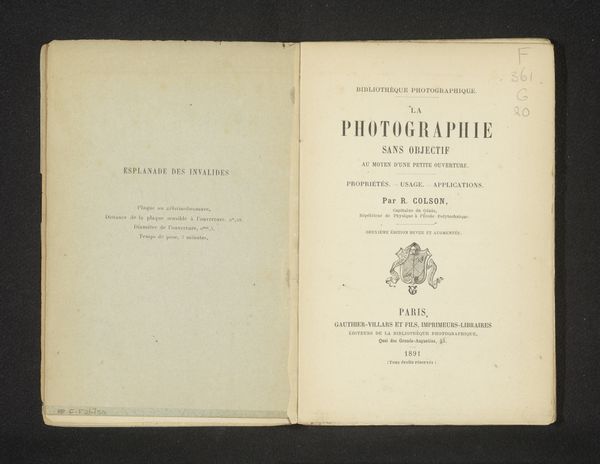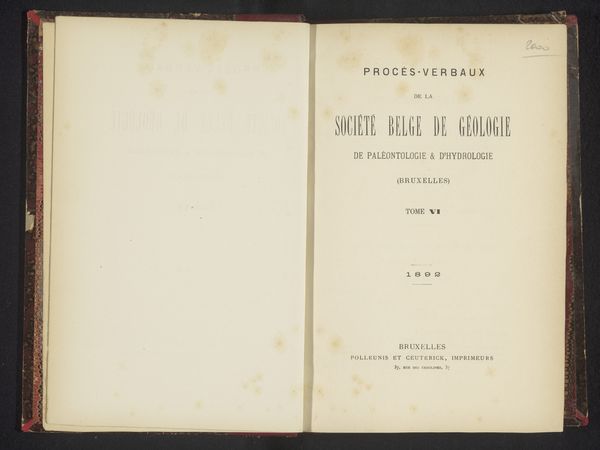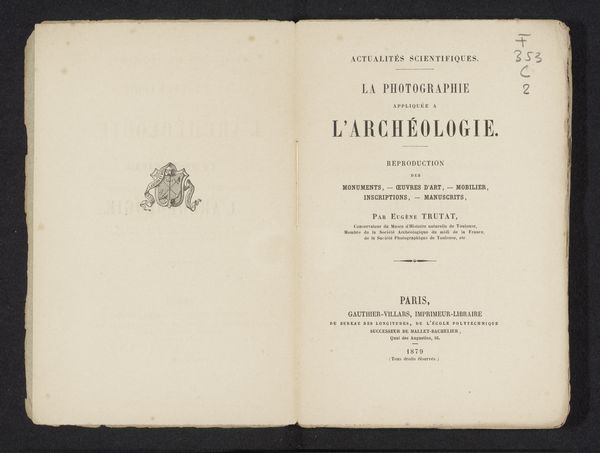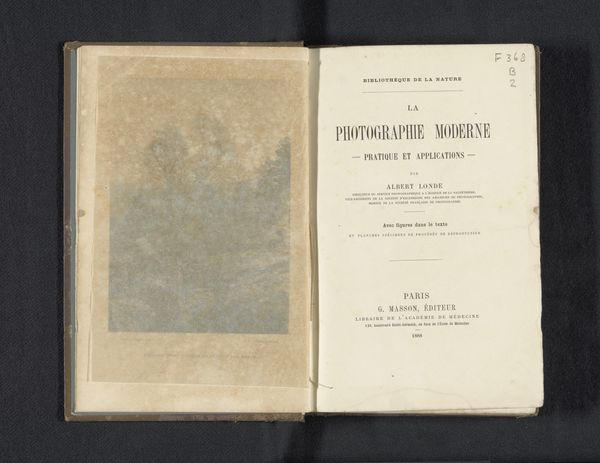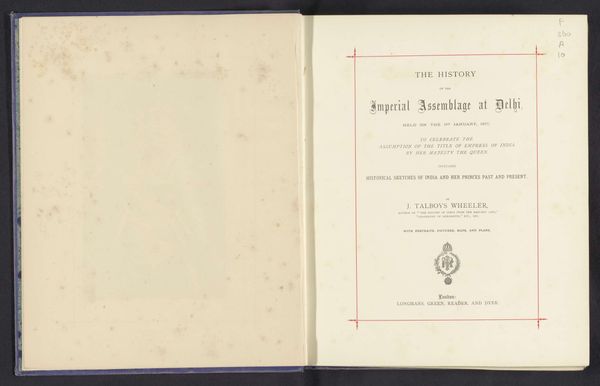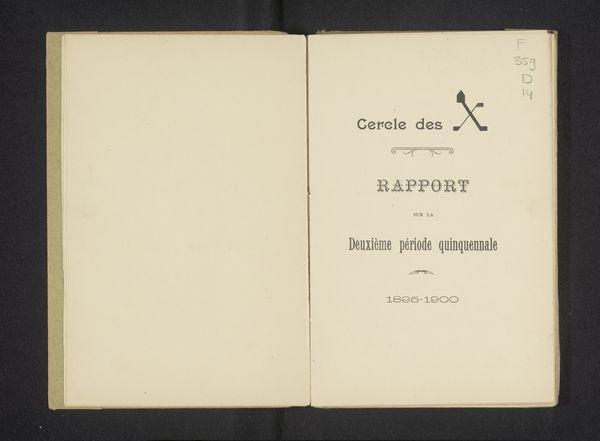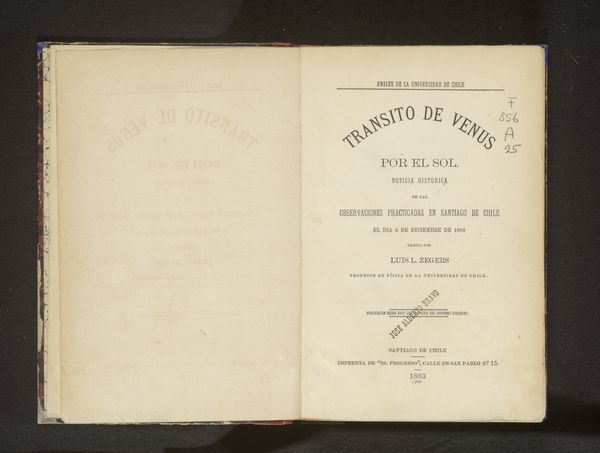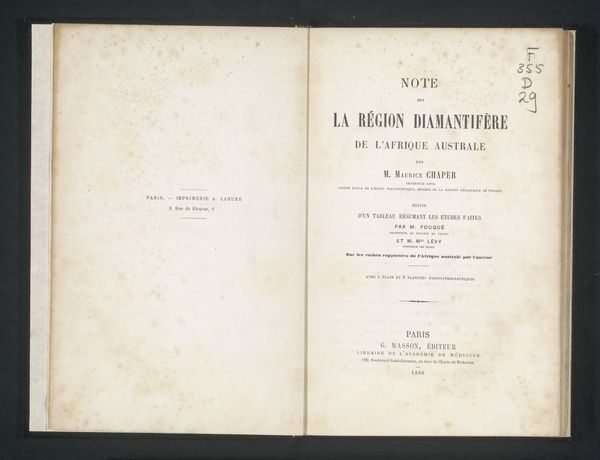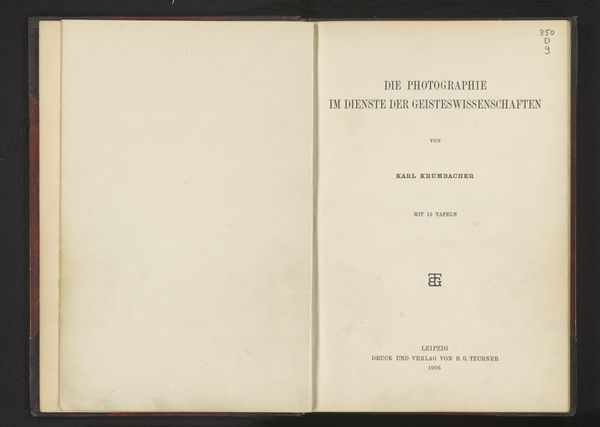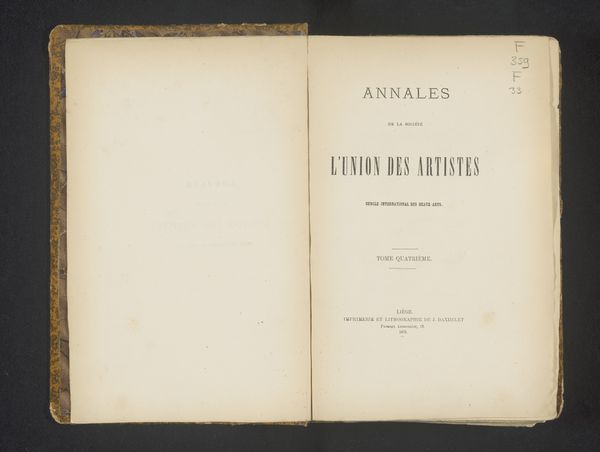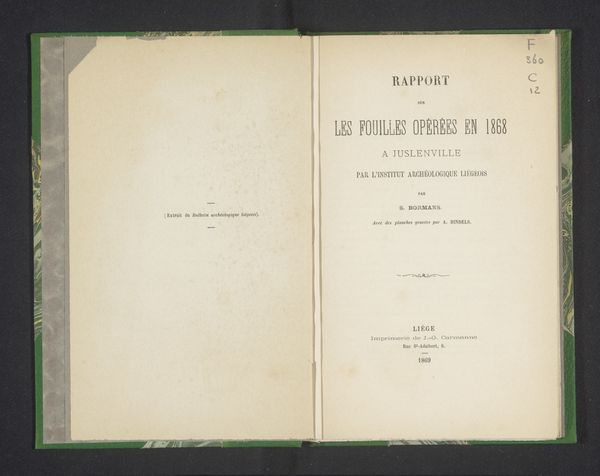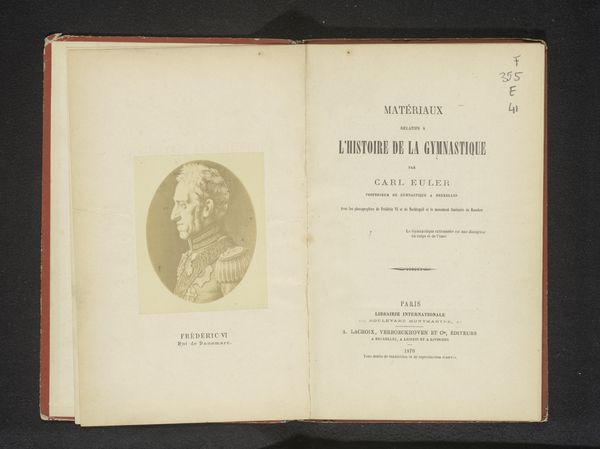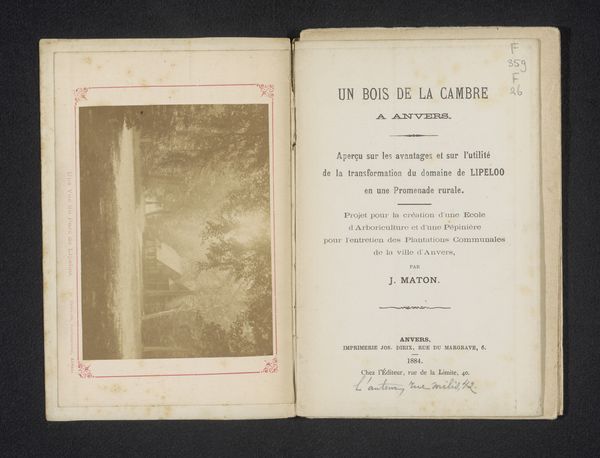
print, textile, paper, photography
# print
#
textile
#
paper
#
photography
Dimensions: height 256 mm, width 172 mm, thickness 40 mm
Copyright: Rijks Museum: Open Domain
Curator: Here, we have "Dans la Grande Forêt de l'Afrique Centrale," a document from 1899 crafted from print, textiles, and paper, complete with photographs. The artist, Franz Thonner, has quite clearly detailed the book. Editor: My initial impression is one of restraint, oddly. For a text presumably about a journey through the heart of Africa, it's quite...stark, devoid of illustrative flourish besides the text itself and an emblem. It speaks to a certain colonial mindset, perhaps? Curator: That's a fair assessment. I would suggest this speaks to an emerging genre of colonial travelogues, attempting to present a veneer of scientific observation. The printing press became a critical part of circulating such travel stories. Editor: So the imagery becomes embedded: not through depiction, but through this carefully crafted text. Look at the typography— deliberately clear, a font suggesting authority, and all within the frame of "scientific observation." And there at the bottom of the title page the regal image to denote the Belgian publishing house. This has embedded iconic resonance to show what’s beneath it. Curator: Exactly. It reinforces Belgium's colonial project in the Congo. A symbol of the supposed natural order and of the socio-political order. Thonner’s account then adds another layer of authentication for this public audience to internalize. Editor: The very title, "In the Great Forest of Central Africa," becomes an instant cultural shorthand for the so-called "Dark Continent" for its intended readership. It preys upon romantic ideals while framing Africa as something needing "discovery". This has some bearing to the text and visual symbols to carry over to other imagery or thought processes related to that land. Curator: Absolutely. By visually presenting this as factual—complete with translated German text and photographic evidence mentioned on the cover—the colonial power dynamic is presented in a particularly seductive and, frankly, dangerous form. The authority behind this publication is immense. Editor: Seeing it now through this lens shifts my perspective. It’s not just about documentation; it's about manufacturing consent, building cultural narratives about identity, land, and control of this area. Curator: Indeed. This material object served a very particular purpose within a certain ideological structure. That continues to ripple out to us today when we approach such an artefact. Editor: I find myself pondering how our perceptions have been shaped and subtly warped by these objects which might now appear almost benign but in truth have far reaching effects. Curator: I completely agree. It’s why re-examining even seemingly simple images allows us to think of how these things operated back then in a colonial society, but also, in terms of images today in different areas.
Comments
No comments
Be the first to comment and join the conversation on the ultimate creative platform.
